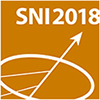Speaker
Description
A major success story of the European Synchrotron Radiation Facility (ESRF, the European Synchrotron) has been its facilities for Structural Biology. Here, end-stations for experiments in Macromolecular Crystallography, BioSAXS and in crystallo spectroscopy have recently been supplemented by the installation of a high-end cryo-electron microscope. The very high level of productivity of these end-stations has been driven both by the scientific excellence of the ESRF"s Structural Biology user community and by a very high level of beamline automation which allows experimenters to get the best out of even the most difficult of samples. This talk will provide an overview of the automation currently available, including a completely "hands off" beamline and protocols for the construction of useful, complete diffraction data sets from multi-crystal data collection experiments.
December 2018 will see the ESRF temporarily close for the construction of the Extremely Bright Source (EBS) which will have a horizontal emittance of the electron beam in the storage ring ~ 30 times smaller than is currently the case. The proportionate reduction in X-ray beam sizes and divergences will allow the construction of new generation ESRF MX beamlines with flux densities at the sample position up to 5 orders of magnitude higher than at present. This talk will thus also look forward to the possibilities that the ESRF-EBS will afford in the study of structural biology.

